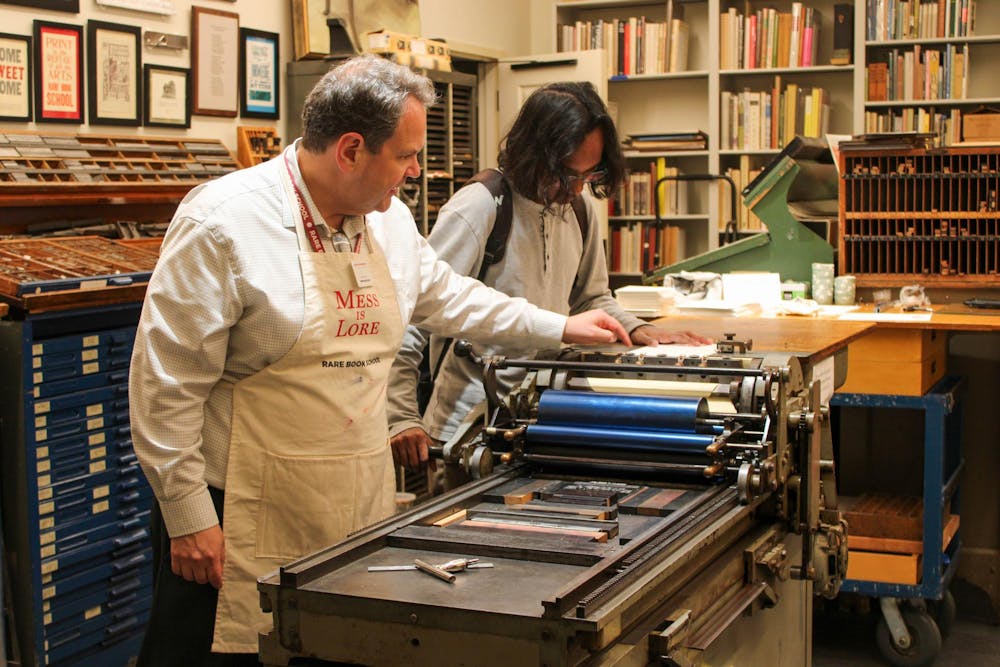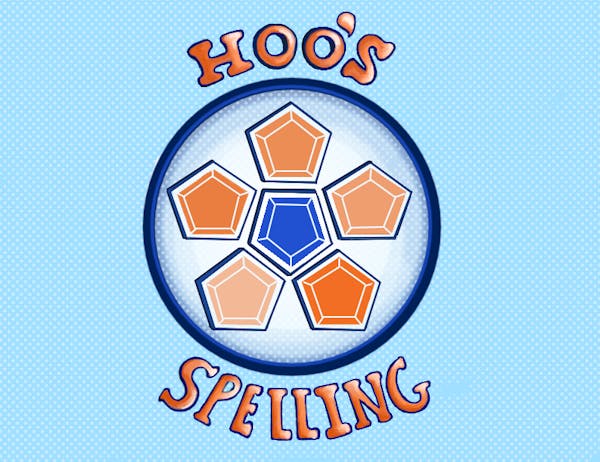Anchored in Shannon Library on one of the most highly trafficked floors is the Rare Book School, a research institute dedicated to the historical study of books and their material context. RBS is open to students, faculty and local community members alike, with classes and exhibits that work to highlight their mission of understanding our cultural history through physical text.
During Shannon Library renovations, the Rare Book School moved from the basement to the more visible second floor. Now situated in between study spaces and Saxby’s, Katie Hodges-Kluck, assistant director of communications at RBS, explained that RBS wants to re-introduce itself to the community.
“We really wanted to let people see our new, beautiful space, see what we do, make it so that we’re part of the community here on campus,” Hodges-Kluck said. “Administratively, we’re separate but we’re based in [the University].”
The RBS is an independent, non-profit institute that employs around 100 faculty members and over 20 staff members, with a collection of around 80,000 books and 20,000 prints dating over 2,000 years old. While it has called the University home since 1992, it operates separately from the University with other locations across the country and abroad such as in Chicago, Princeton and Oxford. This separation allows for both students and Charlottesville community members to participate in their summer classes and events.
The classes offered emphasize a hands-on approach when it comes to analyzing old, physical texts. RBS encourages students of their programs to fully immerse themselves and view these texts, not only as the words on the page, but also as a book created within its cultural contexts. Michael Suarez, the executive director of the RBS, explained that looking at the paper and other materials of these books in their original form reveal more about them.
“The future study of the humanities will be very much tied up in a material term,” Suarez said. “These things are really important because they’re about human labor that we tend not to think about but recovering that human labor and understanding the book is almost a kind of wormhole into a particular era in history.”
Along with these classes, the RBS hosts free events monthly. These events take careful planning however, and the curators have to figure out both what theme they want to have for the books on display and the logistics of getting these books on display. Hodges-Kluck explained that the curatorial team frames their exhibits around the fragility of these materials.
“Part of their work is not just deciding [they’ll] pull these [materials] out,” Hodges-Kluck said. “But how do we pull them out and display them in a way that preserves the terminal body of the book?”
One such event was their open house hosted Oct 17. The event itself was open to the general public allowing for anyone to stop in and out throughout the afternoon. Guests were invited to try their hand at letterpressing, gold stamping and given the opportunity to view items in the school’s collection. As guests walked from room to room, they were greeted by staff at every corner, eager to explain more about the school.
Visitors were welcome to touch some of the books on display — as long as they washed their hands first. This allowed for guests to see and feel the materials as they originally were. Keanan Berry, first-year College student, explained how seeing these books physically changed his perspective on what learning looked like years ago.
“It’s interesting, especially looking at the anatomy books... how different learning processes look like in older times,” Berry said.
Along with highlighting their new location, the open house also allows the RBS to spread the word on their main mission — their summer classes. The RBS offers a long list of five-day courses that traditionally are limited to around 12 students learning for nearly 30 hours a week. Tuition ranges from $600 to $1,500 with the school trying to keep tuition as affordable as possible. These courses focus on old and rare pieces of texts and their printing history, aiming to highlight broader human history through the details of their textual artifacts.
RBS summer course programs accepts students from various walks of life. Undergraduates and graduate students alike are encouraged to apply but so are professors and even employees at the RBS. Led by a professor, these small class sizes encourage discussion among seasoned professionals and English majors alike.
While they offer around 40 summer classes currently, new classes are constantly being introduced as interest in this field shifts from one topic to another. Laura Perrings, the director of programs and education at RBS, said that student input greatly influences the courses offered.
“We are always listening to the students,” Perrings said. “And trying to find out what we’re not offering that they want to [take].”
RBS also offers numerous fellowship programs geared towards undergraduate and graduate students of the University. These fellowship programs provide a scholarship to an undergraduate student interested in taking a RBS course. The programs differ in their requirements, but all involve a fully paid five-day course and the ability to use these courses towards a greater project such as a distinguished major program, a thesis or even term papers.
According to Suarez, the RBS’s unique course offerings and fellowship opportunities allow for students to both expand on their original passions and explore a variety of new intellectual pathways.
“Students who are interested in this kind of thing can have all sorts of career possibilities [and] can also open up new intellectual vistas and help people get excited about the work they're doing intellectually on Grounds,” Suarez said.
The RBS hopes to show the greater University community, through events such as the open house, their core mission — a uniquely social and firsthand experience of textual artifacts spearheaded by shared passions and hands-on experiences.







